Ultimate Passagemaking Sailboat - Accommodations
03/10/16 13:26 Filed in: Offshore sailing | Distant Shores III
By Paul Shard, Copyright 2016. All rights reserved.
Are you planning an extended cruise? Is "bluewater cruising" in your future? If so you may be planning to bring additional crew along on some of the offshore passages. Read on!
Planning our ideal passage-maker I have been looking at other layouts in the 45-50 foot range. Here are a few of the best known names in offshore monohulls. Hallberg-Rassy, Oyster, Hylas, and comparing to our last boat, the Southerly 49. We're looking at planning a passage with the two of us aboard, and planning to have extra crew join us on some longer passages. Let's see how the boat would accommodate the extra 1-3 people on passage, as well as how the boat could be set up for extra guests on routine sailing and exploring.
In these images below I have labelled the preferred berths as I would assign them to my passaging crew. We need to look after our crew!
Oyster 475

Above is the Oyster 475 with a lovely large aft owner's cabin. The galley is nicely located near the centre of the boat for reduced motion. On passages I would plan to use the aft cabin with lee-cloths to keep off-watch crew secure. There are 2 more sea berths just forward of the mast, and if a fifth person was aboard they could use the saloon settee. If going downwind of course you could use the forward cabin, but on many passages that berth will have too much motion for this watch keeper :-) So the Oyster layout will give you an extremely comfortable boat for the typical cruising couple, plus accommodate 3 additional crew for passages all in their own bunks.
Hallberg-Rassy 48 MkII

Here is an interesting take on an interior designed to look after 2 couples in style. The forward cabin is called a "Super Cabin" by Hallberg-Rassy who correctly suggest most cruising boats are sailed by 1 or 2 couples. Instead of a lot of small cabins common to ex-charter boats, they propose 2 very nice cabins and a smaller 3rd cabin forward. Seems like a good idea. For passage making there are great bunks for 4 people, but the 5th would need to climb over the 4th in my picture above. Both the 2 luxurious cabins have separate showers - nice!
Hylas 49

The classic Hylas layout again has 2 people in the luxurious aft owner's cabin (separated by a lee cloth). The 3rd crew have a private cabin just forward of the mast, then 4th and 5th crew get to curl up a bit on the saloon settees. This is another nice layout for a couple, and there is a luxurious forward cabin for guests up forward, although they would likely not want to sleep there on passages unless downwind. Neither heads appear to include a separate shower. The large galley is nicely positioned near the companionway and narrow enough to keep the cook in place and comfy on passages.
Southerly 49 Distant Shores II

Distant Shores II - our Southerly 49 has the main owners cabin forward so we always moved out of it on passage and slept in the aft cabins. A third crew slept in the saloon, and finally the 4th could sleep forward, or divide one of the aft bunks. These cabins are a bit low to make access for the second berth bit difficult, so in practice we only did this a few times. Downwind I (Paul) used the forward cabin on our last downwind transatlantic passage. The galley is nice at sea… although there is a bit more motion than if the galley was aft. The forward shower is a dedicated unit.
Aft Cockpit or Centre Cockpit
I think many people will agree the main aft owner's cabin is a good feature. Aft cabins are great as they allow spacious headroom above the aft cabin, but this centre cockpit design means a smaller cockpit. We enjoyed the large forward stateroom on DS2 but did not like that we had to move aft for passages. Our 49 had that nice large cockpit, but paid the price with lower headroom in the 2 aft cabins.
What do you think?
Would you prefer an aft cabin, or aft cockpit? Or something else?
Comments
Southbound Part 1 - Erie Canal
By Paul Shard, Copyright 2016. All rights reserved.
Do you dream of escaping the cold northern winter on your boat?
For sailors on the American East Coast the Intracoastal waterway is a great resource and fun trip south. For boaters on the Great Lakes, the first step is to get out to the coast. Our favourite route is to use the Erie Canal to get to the Hudson River and New York City.
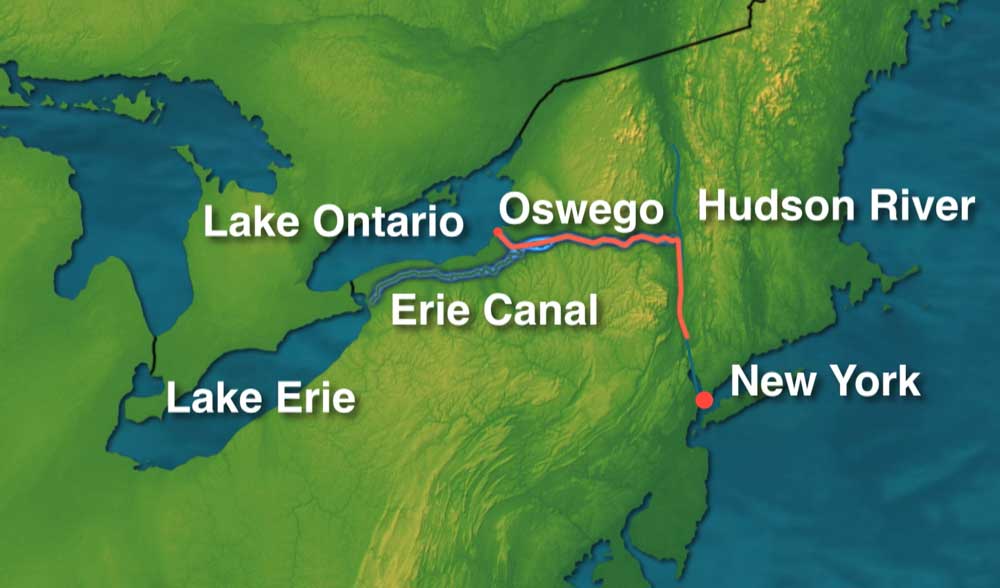
What Time Should We Start
We have done this trip Southbound 3 times, leaving Canada from August 29 up to September 21. If you then take your time enjoying the trip south you will not arrive in the Hurricane Belt before the finish of the hurricane season in November. BTW you should check your insurance policy to see what their dates are for hurricane season (often finishing November 1). We recommend arriving at the Erie Canal early to mid-September. So if you come from further up the system you can work the dates back from there.
Waypoints - Where to be When
Leave before it gets too cold crossing New York via the Erie Canal. The Erie closes mid-November but that would mean a cold trip. Our late-September trips were very nice with frost a few mornings and fall colours on the trees.
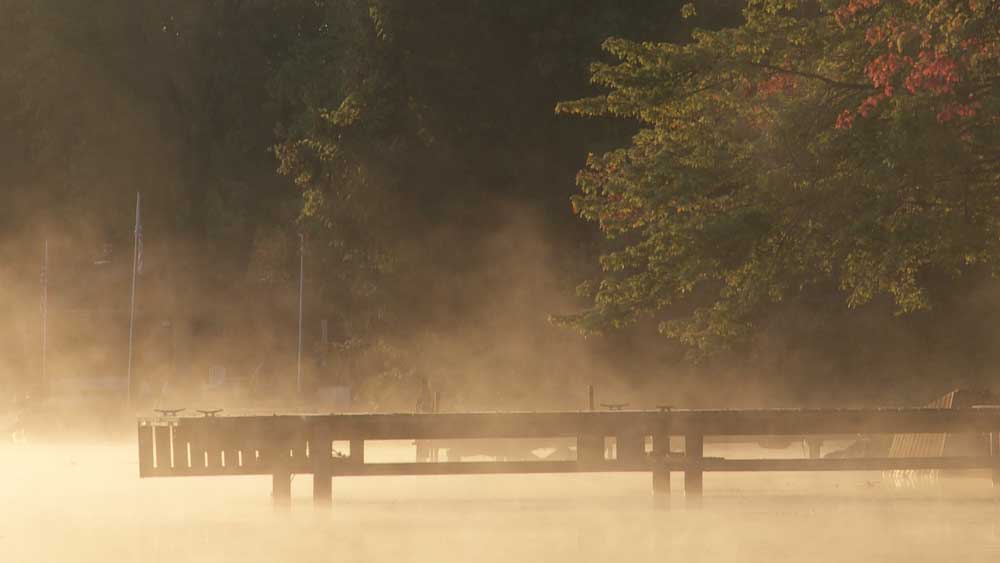
Insurance
Hurricanes - some insurance want you to stay north of 35 degrees until after Hurricane Season - That's around Oriental North Carolina - and partially explains the popularity of this destination :-) Of course other companies insure boaters south of this zone. Check your policy!
Annapolis Boat Show
Many sailors try to get to Annapolis on the Chesapeake Bay in time for the US Sailboat show early October. Annapolis is about 250 nautical miles from New York City. We plan a week for this at least - more if you plan to explore along the way. Remember there could be weather delays on this route as you go out in the ocean to the Delaware Bay. If you get in a few days early you might snag a mooring in Spa Creek right by the show (or in Back Creek nearby). Then you can spend the time at the show buying those last minute must-have boat purchases.
Erie Canal Attraction
One thing we learned from our first trip South was to prepare a bit more time for the Erie Canal. This first leg is often done in a hurry, but we have spoken to many who rated it as a high point of the route South…
Ideal Itinerary
Planning this trip in the future this is what we would do…
- Leave Toronto first week September
- Mast down at Oswego Mid-September
- Arrive Hudson River 3rd week September
- Enjoy New York
- 8 Days to Chesapeake Bay
- Annapolis for US Sailboat Show October 8
Erie Height Restrictions
You need to take your mast down to allow for the clearance in the canal (http://www.canals.ny.gov/about/about.html#heights) Basically 20 feet clearance for our Route from Oswego to the Hudson, or 15.5 feet if you come the Erie Canal all the way from Tonawanda (Buffalo).
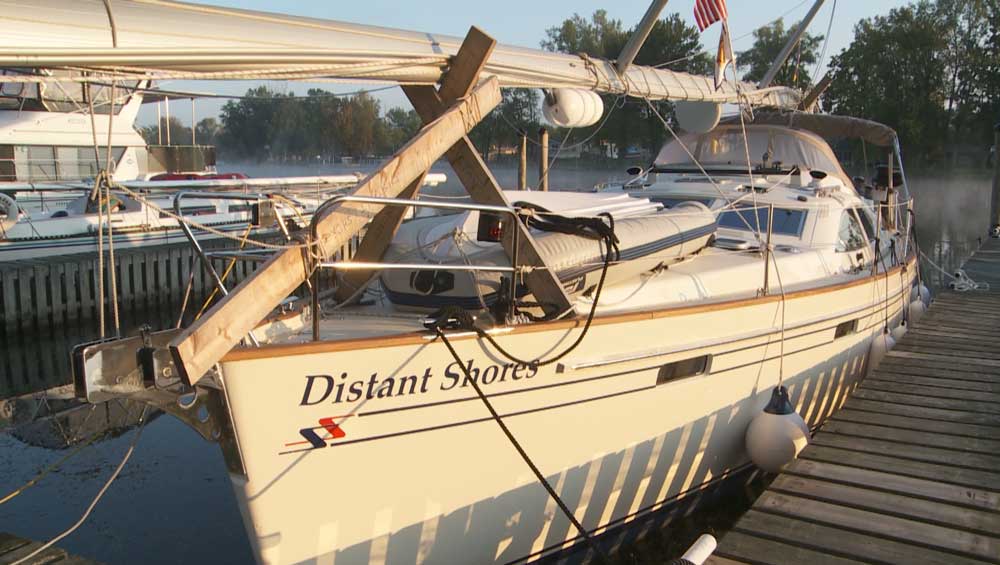
Preparation for the Erie Canal
Sailboats have two options but must take down the mast to transit the Erie Canal…
- Carry the Mast on Deck
- Have your mast trucked overland to meet you
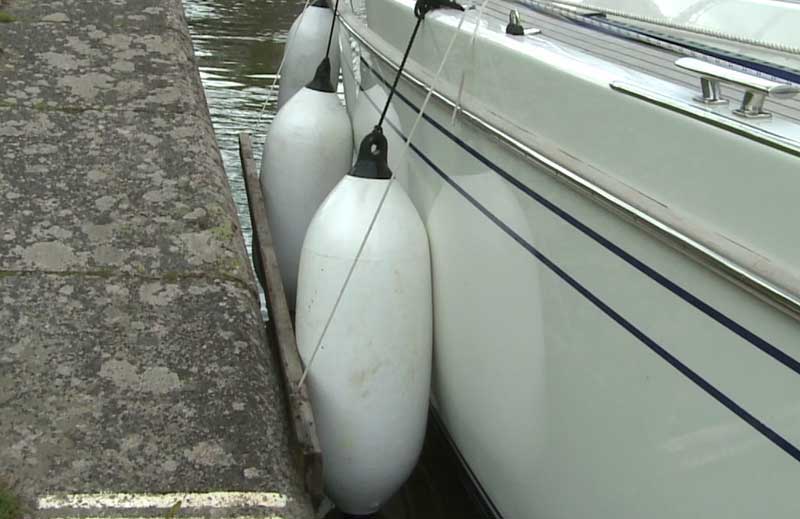
Get Protection - Fenders and Boards
Transiting the locks means you'll come up against the rough lock walls, docking and moving up and down the side many times a day. Your regular fender strategy probably won't offer sufficient protection. We recommend a fender board to keep allow your fenders to slide easily up and down rough lock walls. This can be as simple as a couple of 2-by-4 boards 8-feet long. Drill a hole vertically so you can put a line down through the board and it won't chafe rubbing on the wall.
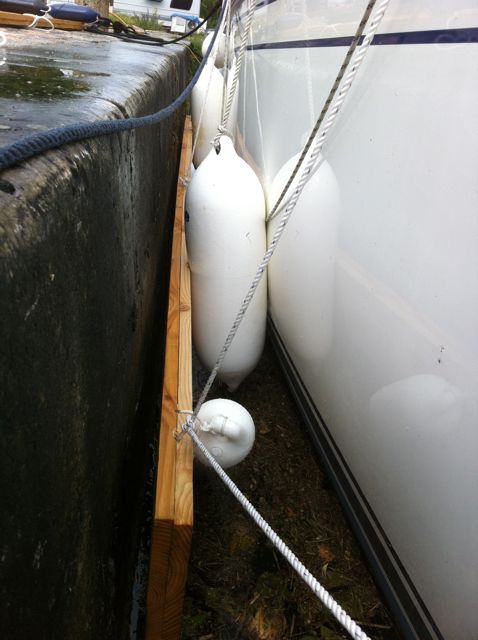
Prepare to Enjoy the Erie Canal
So you have designed a secure way to mount the mast, made a couple of fender boards, and designed a schedule to get you south. Now prepare to enjoy the canal journey!
Check out our How-To video below for more hints and a taste of the trip through the Erie Canal.
Paul & Sheryl
Mainsail Choices
09/07/16 15:58 Filed in: Distant Shores III
By Paul Shard, Copyright 2016. All rights reserved.
What sort of mainsail setup is best for long-distance sailing?
On our first cruising sailboat - the 37 foot Two-Step - we had full battens and a rudimentary single-line reefing system. You can see the deep first reef in the picture below. By pulling the single line in the cockpit you would bring both reef points down to the boom using a pulley system hidden in the boom.

Unfortunately the sail-slides were just plastic and regularly broke. Also the single line system tended to get tangled inside the boom since the pulley system would spin around and add friction. Regularly we had to try to untangle the lines.
Both these shortcomings were eliminated by the clever setup in the Selden masts we had on our 2007 Southerly 42 Distant Shores. The sail slides are replaced by Selden's excellent roller car system … check out the link here

We also have this on the Southerly 49 and this system works VERY well. The cars slide easily, never bind and are quite strong. We carry a couple of spares, but in nearly 50,000 miles with this system we have only broken one car.
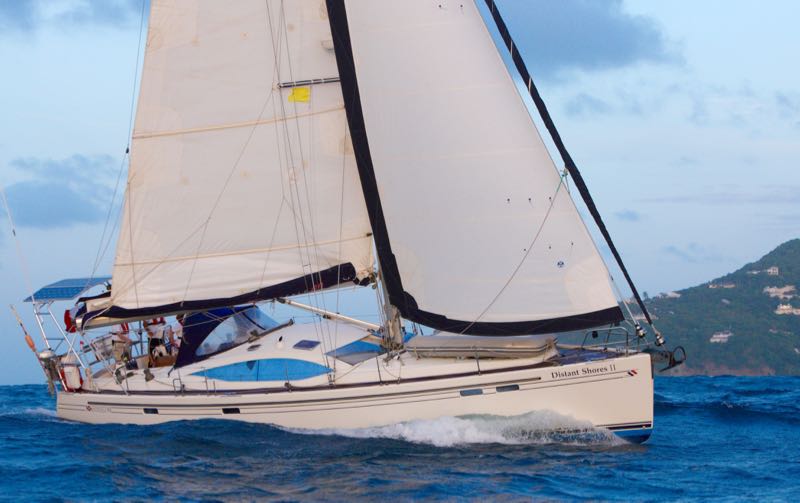
Reefing is similar to our original "single-line" system but with an important difference. The Selden system involves a car in the boom that cannot become tangled as it could on our older system on Two-Step. Basically the car moves back and forth inside the boom such that it can't rotate and twist. Clever solution to the problem. Here's link to Selden's website describing the system.

This system allows you to have 2 reef points, each reefed with a single line from the cockpit. We also have a third reef, but this can't be done the same way. We have that as a traditional jiffy-reef.
In-Mast Furling
We have never sailed offshore using an In-Mast or In-Boom furling solution, but I confess I have often wondered if its time to give them a try. In-Mast systems seem the most time-tested, and many boats have circumnavigated with this. On our last crossing there were numerous boats on the ARC with in-mast furling and I envied how easy it would be to reef in our out so easily. Here is a big Hallberg-Rassy 54 with a Selden inmast furling system and a full batten mainsail.

Our crew Anthony, an experienced offshore racer, has the Selden "In-Mast" system on his Bavaria 50 and has done a number of offshore races with it and thousands of miles. He got me thinking more seriously about giving it a try…
Disadvantages include added weight aloft and the potential for a jam if something goes wrong.
Advantages are ease of operation when sailing short-handed, your spend less time furling and covering the sail, and you're more likely get the sail out and set up on a light air day. We SO OFTEN see cruising sailors just motoring with the mainsail cover on when they might be able to sail. We might have been guilty of that ourselves on occasion…
If anyone has experience with this please chime in! Comments Please :-)